



The complete line of Exo Terra®






The complete line of Exo Terra®




The new range of Exo Terra Thermostats makes regulating the temperature of your reptile’s home accurate, reliable and simple. With thermostats suitable for any heat source and utilising the latest technology with day/night timers and humidity control*, you can rely on Exo Terra to keep your reptile’s habitat perfectly balanced, 24 hours a day.
Available from all good reptile stockists nationwide. *Day/night timer and humidity control on selected models only

CONTACT US EDITORIAL ENQUIRIES editor@exoticskeeper.com
SYNDICATION & PERMISSIONS craig@exoticskeeper.com

ADVERTISING advertising@exoticskeeper.com
MAGAZINE PUBLISHED BY Peregrine Livefoods Ltd
Rolls Farm Barns
Hastingwood Road
Essex
CM5 0EN
Print ISSN: 2634-4676
Digital ISSN: 2634-4688


EDITORIAL:
Thomas Marriott
Aimee Jones
DESIGN:
Scott Giarnese
Amy Stonesmith

Whether you’ve been with us since the start or this is your very first issue, welcome!
As a team of exotics experts, we love animals. We aim to delve into the most prominent news and research in a bid to help everyone in the hobby improve their standards, regardless of experience or interests. As such, this issue focuses on some major topics from simulating natural environments to exploring the scope of reintroduction.
We speak to Dr Jonathon Howard (BeardieVet) on wild bearded dragons and re-thinking the way we keep these muchloved lizards. Chester Zoo shares some important breakthroughs

with golden mantellas which could strengthen the relationship between zoos and the private sector. Harvey and Tom at Celtic Reptile and Amphibian give us an exclusive interview from a new generation of forwardthinking herpetologists. Dr Pool discusses fish and science in our expert opinion and we shine the species spotlight on some incredibly interesting inverts.
As always, we want to say a huge thank you for the immense support this publication has received and some of the wonderful feedback our readers have given us over social media. As lockdown restrictions begin to ease up, our team are ready to hit the road and bring you new stories from across the country with accompanying videos, exclusive content and behind-the-scenes features from the most exciting projects in the field.
If you love this magazine as much as we love creating it, please do continue to share content and give feedback as often as you can.
Thank you,
Craig Thornton











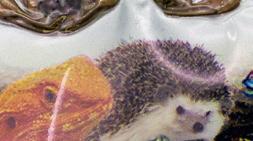














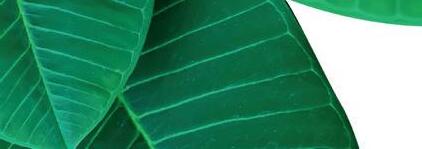









































































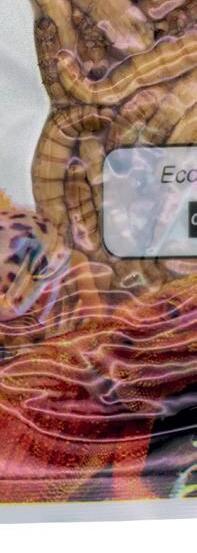













02 06 14
02 EXOTICS NEWS

The latest from the world of exotic pet keeping.

06 HOPE CALLS FOR THE GOLDEN MANTELLA
New hope for the critically endangered, Mantella aurantiaca.

14 SPECIES SPOTLIGHT





Focus on the wonderful world of exotic pets. This month it’s the Blueberry Hermit Crabs (Coenobita purpureus)
17
17 24 32
TOUCAN TROUBLE
Despite being some of the most iconic tropical birds on the planet, it is unlikely you will see a toucan in a UK pet shop.

22 ANIMAL FACTS

Did you know...?
24
CELTIC REPTILE AND AMPHIBIAN
Reptiles and amphibians are among the most threatened species in Europe. Tom and Harvey, both 17, have made it their mission to change this.
32 BEARDED DRAGONS: A NEW ANGLE
Major breakthroughs in field research are readdressing how we should keep these muchloved lizards.
42 EXPERT OPINION

Rethinking Specialist Diets with Dr Dave Pool of Fish Science.

BIAZA (the British and Irish Association of Zoos and Aquaria) have been working hard to try to ensure the Government provide financial help to zoos. However, despite the existing “Zoo Animals Fund” ( the Government`s emergency fund for zoos) having been set up, it has only benefitted a small number of zoos so far (some 28 zoos out of over 300 licensed zoos in England) as of the end of January. This is mainly due to the design of the scheme which is complex to apply for and excludes many such as Chester Zoo and the ZSL London Zoo from obtaining the help they desperately need. A recent BIAZA survey indicated that at least 24 BIAZA member zoos are likely to face permanent closure over the next 12 month period. Nearly 70% of members felt that they were being excluded from the “Zoo Animals Fund” due to restrictions imposed, yet 80% of members said that access to this fund would help them survive. (The deadline for applications was been extended until the 26th February). On the 5th February BIAZA wrote to the Prime Minister again, this time to suggest a new “Zoo Recovery Fund” to replace the current, somewhat ineffective, “Zoo Animals Fund” in order to better support struggling zoos throughout this coming year. (Source; www.BIAZA.org.uk)
On the 25th January Sandwich Wildlife Park in Kent announced that it would not be reopening due to the current situation. Some of the animals will be moving to its sister collection at Wingham Wildlife Park, along with the staff, saving any possible redundancies.

A pair of bush dogs have arrived – the female “Jessica” arrived from Knowsley Safari Park and the male “Tiago” arrived from Safari de Peaugres in France. They will take up residence in the Cloud Forest exhibit alongside the Andean bears and howler monkeys. There are around 200 bush dogs in 50 world zoos.
On the 2nd February former Zoological Director of Jersey Zoo Mr Jeremy Mallinson OBE sadly passed away. He originally joined the zoo in 1959, before too long he was promoted to Gerald Durrell`s right hand man where he was instrumental in helping shape the zoo and its future conservation work. Eventually he became Zoological Director, and his remarkable career at the zoo came to an end in 2001 when he retired.
On the 12th January a male Javan gibbon, named “Tiga”, was born. Carrie Symonds (Boris Johnson`s fiancée) has been appointed as the new Head of Communications at the Aspinall Foundation. In addition to the wide range of overnight accommodation already offered at the park, a new “Giraffe Hall” will be coming in 2022. The 15th century, grade 2 listed, Wealdon Hall House on the estate has been lovingly restored, with the interior designed by Victoria Aspinall, it features 10 bedrooms, with a further 5 luxury cabins within the landscaped grounds and gardens. The unique accommodation will offer close up views and interactions with the park`s giraffe herd.
Parc Safari, near Montreal in Quebec, recently sent two Canadian-born cheetahs back to Africa for a soft release and reintroduction program in Zimbabwe, with assistance from the UK`s Aspinall Foundation. Four cheetahs were originally born in 2019 as a result of a cooperative effort between the Toronto Zoo and Parc Safari.

Whilst the two female cubs remained in Canada, the two males “Kumbe” and “Jabari” were prepared for their long journey to the Imire Rhino & Wildlife Conservation Preserve in Zimbabwe. Here they will be trained, using a lure, to hunt during a 60-day quarantine period, prior to their eventual release into the wild. Once released they will continue to be closely monitored. The whole move was part of the Cheetah Species Survival Plan, for the conservation of the species. (Source; www.torontozoo.com)
A newly described species of chameleon, discovered by zoological explorer Frank Glaw in the Sorata massif – a narrow stretch of degraded rainforest in Northern Madagascar, now appears to be the smallest known chameleon in the world, taking the title from the previous holder Brookesia micra which was discovered in 2012. It may also be the smallest known reptile in the world? This latest chameleon species, named Brookesia nana, is even smaller than B.micra at only 14mm in size. In total there are 30 known members of the genus Brookesia, or the dwarf chameleons. Most are found in Northern Madagascar but three species are found in the Southern half of the island. (Source; www.news.mongabay.com)


Recently scientists at the Kadoorie Farm & Botanical Gardens at Tai Po in Hong Kong published their phylogenetic analysis of data which had been collected using DNA extracted from wild pangolin scales, in the illegal wildlife trade, and confiscated by Hong Kong customs in Southeast Asia in 2015.
The finding was a complete surprise. Phylogenetic data pertaining to the Chinese pangolin (Manis pentadactyla), the Indian pangolin (Manis crassicaudata) and the Sunda pangolin (Manis javanica) respectively, were included for reference. However, a distinct clade consisting of two haplotypes, H4 and H8, were shown to be different from any of the reference data. At that time, reference data for the Philippine pangolin, Manis culionensis was not available. Five years on from this initial discovery a group of pangolin researchers in China and Germany (the Pangolin Research Group) have since concluded that a fifth species of Asian pangolin is likely to exist.
The research group expanded the reference dataset to include all four known Asian pangolin species, and was able to show that haplotypes H4 and H8 do indeed form a distinct clade that differs significantly from any known pangolin species. But for now, the potential fifth Asian pangolin species remains undescribed in taxonomy and has only been found in the illegal trade. Pending further work to confirm its existence and elucidate its biology, every effort must be made to save the creature before it disappears for good at the hands of the poachers.
Sadly pangolins are the most illegally trafficked mammal in the world today. (Source; Kadoorie Farm & Botanical Gardens. www.kfbg.org)
The Greenland or “sleeper” shark is believed to be the longest-living vertebrate on earth according to scientists. A team of researchers, led by Julius Nielsen, used radiocarbon dating of eye proteins to determine the ages of 28 Greenland sharks, and estimated that one female was about 400 years old, meaning that she was likely to have been born around 1620, which is incredible. The former vertebrate record-holder was a bowhead whale estimated to be 211 years old. Julius Nielsen, a marine biologist from the University of Copenhagen, said: “We had our expectations that we were dealing with an unusual animal, but I think everyone doing this research was very surprised to learn the sharks were as old as they were.”

The research was made possible, in part, by the atmospheric thermonuclear weapons tests that were conducted during the 1960s, which released massive amounts of radiocarbon that were then absorbed by organisms in ocean ecosystems. Sharks that showed evidence of elevated radiocarbon in the nucleus of their eye tissue were therefore born after the so-called “bomb pulse,” and were younger than 50 years old, while sharks with lower radiocarbon levels were born prior to that, and were at least 50 years old or older, the study authors wrote.
The scientists then calculated an age range for the older sharks based on their size, and on prior data about Greenland sharks’ size at birth and growth rates in fish. According to the results of the analysis – which has a probability rate of about 95% – the sharks were
at least 272 years old, and could be as much as 512 years old, with 390 years as the most likely average life span, according to Nielsen. The team believes the animals only reach sexual maturity when they are 4m-long suggesting this does not occur until the animals are about 150 years old. Their longevity is attributed to their very slow metabolism and the cold waters that they inhabit. They swim through the cold waters of the Arctic and the North Atlantic at such a sluggish pace that has earned them the nickname “sleeper sharks.” Seal parts have been found in their bellies, but the sharks move so slowly that experts have suggested that the seals must have been asleep or already dead when the sharks ate them. Greenland sharks are huge and can grow up to 5m in length. Yet, they grow only by 1cm a year.
(Source; www.earthlymission.com)
Collated and written by Paul Irven.
Each month we highlight a favourite website or social media page
With the belief that “Reptiles have evolved to flourish in their natural habitats. Because of this, there can be no substitute for nature: either we emulate it, or our animals suffer.”
JTB Reptiles will show you how to create a natural set-up for yourself.
www.youtube.com/JTBReptiles

The Psittacus range features over 50 distinct products which are widely regarded as the best on the market.





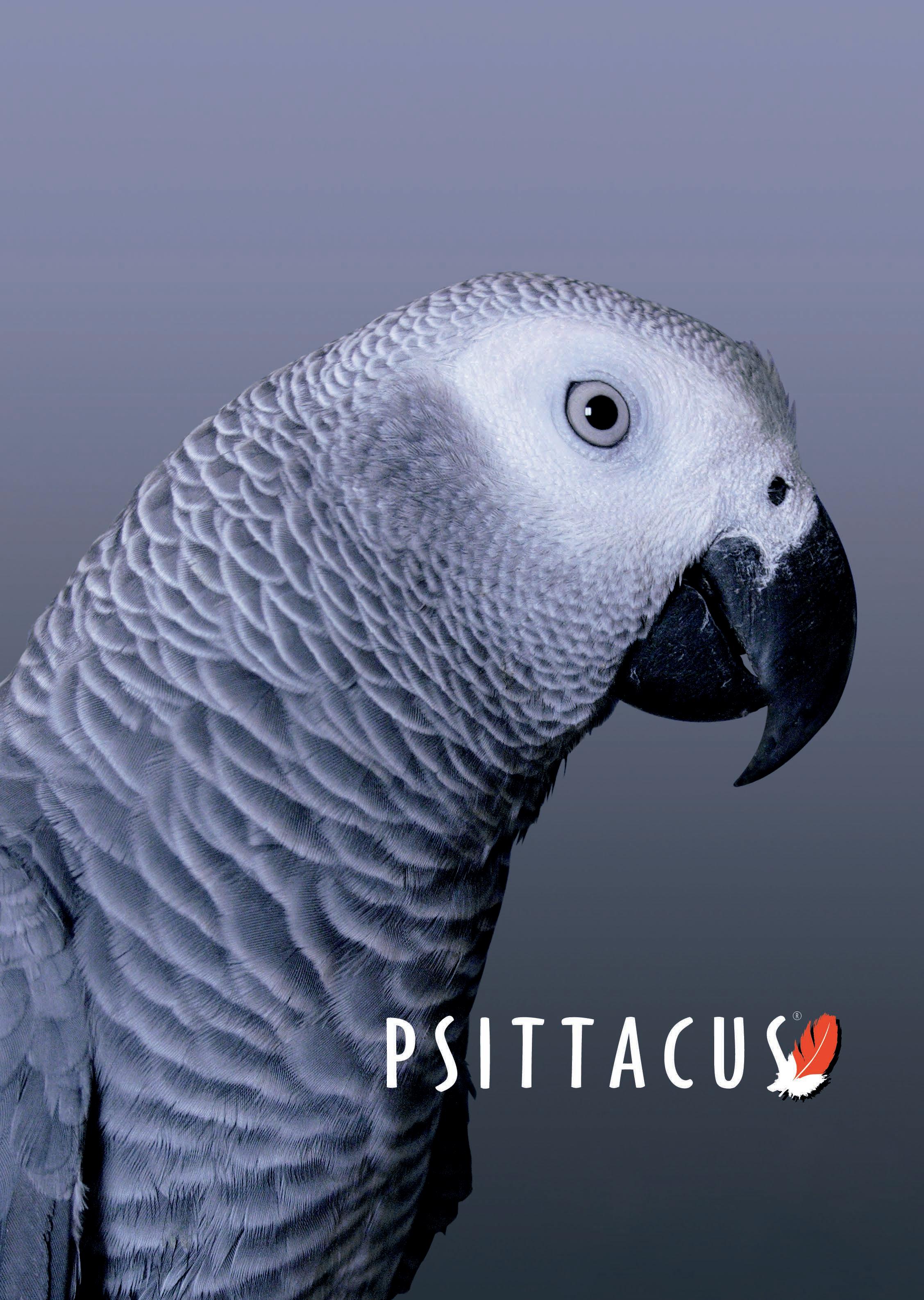
Not all parrot food is created equal.
Studies conducted at Chester Zoo provide new hope for the critically endangered, Mantella aurantiaca.

 Golden Mantella (Mantella aurantiaca)
Golden Mantella (Mantella aurantiaca)
The golden mantella is critically endangered, with just three known locations where the species is assumed to remain in the wild, measuring a total area of just 10km2. However, the new findings spell fresh hope for the reintroduction of the many captivebred populations in the private sector.

There are 16 species of Mantella, 11 of which are threatened, endangered or critically endangered. When data was recorded for most of these species, population numbers were decreasing rapidly, suggesting an even bleaker picture for the genus. All Mantella species are endemic to Madagascar and face the same threats of deforestation, agriculture and mining as many reptile and amphibian species on the island.
Sometimes referred to as Malagasy dart frogs, Mantellas share many similarities with the dart frogs of Central and South America. Many members of the Mantellidae family retain poisonous alkaloid toxins from their prey items. Their bright colouration is a warning sign for this toxicity and is known as ‘aposematic colouration’. However, other members of the genus use Müllerian mimicry, exhibiting the
The golden mantella is a tiny orange to red frog measuring just 24mm and weighing less than 1g. Their easily recognisable colouration and endangered species status makes M. aurantiaca the most well-known of the mantellas.
The golden mantella is present in just three patches of highly restricted pandanus forest in Central and Eastern Madagascar. Here, they tend to spend much of their time in swampy locations, close to sunny clearings in the forest.
These frogs are diurnal and extremely seasonal in their behaviour. M. aurantiaca is relatively cryptic until the rains arrive in January when these frogs can be heard clicking to one another in search of a mate. Calls usually consist of distinct repetitive clicks at different frequencies. A clutch of 20 – 60 eggs are laid in damp leaflitter, where the tadpoles will develop before breaking free and being washed away into swamps and wetlands. It takes around 70 days for tadpoles to metamorphose and then a further 2-3 weeks for the froglets to develop their striking colouration.
Although exports in the 1980s and 90s likely contributed to the decline of wild populations, the number of captive-bred collections around the globe provides a final lifeline for the species in the wild. However, reintroducing a species requires the captive animals to exhibit the same natural behaviours as their wild counterparts to
Hope Calls for the Golden Mantella
ensure successful breeding and survival. In the space of very few generations, animals can become adapted to their captive environment. This can sometimes lead to healthier, hardier and less temperamental animals, better suited to captivity. However, if these changes prevent captivebred individuals successfully breeding with wild individuals, the viability for reintroduction becomes much less likely. For a species as endangered as the golden mantella, understanding these breeding behaviours is likely to be the last hope.
Researchers at the University of Salford and Chester Zoo have conducted an experiment to test
MÜLLERIAN MIMICRY
DEADLY: MADAGASCAN MANTELLA (MANTELLA MADAGASCARIENSIS)
UNPALATABLE: BARON’S MANTELLA (MANTELLA BARONI)
DEADLY: COWAN’S MANTELLA (MANTELLA COWANII)
UNPALATABLE: BEAUTIFUL MANTELLA (MANTELLA PULCHRA)
the behavioural responses of captive golden mantella when presented with recordings of mating calls. These recordings were taken from a wild population, a first-generation population in Madagascar and a fifth-generation population at Chester Zoo. The researchers hoped to gauge how
responsive the captive population were to the calls of wild individuals to better understand the viability for reintroduction. Recordings were then played back to three of Chester Zoos captive populations - one from a display tank and two which were kept in a facility away from the general public.

The results of the paper state: “The playback experiment showed that captive M. aurantiaca do recognise and respond to calls from wild M. aurantiaca. Wild vocalisations created a significant increase in movement and social behaviours from captive frogs, whereas calls from captive populations did not lead to such an increase in these behaviour patterns.”
There are plans being laid out to launch a collection program for the golden mantella which will be regulated by law. It has not yet been confirmed that over-collection has threatened the species, but it is a wise intention to put these regulations in place before it can become an issue.


On the surface, these results paint an optimistic picture for the reintroduction of captive golden mantellas into wild populations. They suggest that captive females will actively respond to wild males, but further research is required to understand whether this could work in reverse. Gerardo Garcia, Researcher and Curator of Lower Vertebrates and Invertebrates at Chester Zoo told Exotics Keeper Magazine: “We don’t know how much impact it could have if you introduce wild populations to captive bred colonies. Would
the captive bred males be less successful to find partners than the female ones? We really don’t know. This study opens the door to not being complacent when considering future conservation translocations with amphibians. Healthy animals aren’t enough, and we need to continue to explore more about the complex biology of this taxa. The more we study the more we realise how much has to be considered to keep healthy colonies (in all aspects).”
Overall, the results of the study do appear to bring a fresh wave of hope for a species which is in dire need. Despite being far from conclusive, it proves that the natural breeding behaviours of female M. aurantiaca have been preserved. With further research and a bit of luck, the likelihood of a greater relationship between private keepers and global conservationists may begin to grow.
The name aurantiacus comes from the Latin meaning for gold. French herpetologist François Maoquard described this species based on the observation of one male specimen in 1900.
The golden mantella is occasionally seen in the pet trade and kept in captivity by exotic animal collectors and zoological institutions. They are popular due to their diurnal activity, attractive coloration and relative ease to keep when settled in. Care sheets are easily found for this species.
Madagascar is home to around 300 species of frogs, 99% of which are endemic to the island. With such rich biodiversity, new species continue to be discovered in Madagascar regularly. However, developing infrastructure and mining are posing a huge threat to many species before they are even described to science. Gerardo expanded on the grave situation in Madagascar, stating: “The major threat for Golden mantella in Madagascar is habitat alteration, modification and destruction. This is the point that we must protect their last populations and support the local communities in the Mangabe region. The most direct way to protect the species is directly support the great NGO in Madagascar, Madagasikara Voakajy. This organisation is completely managed by Malagasy conservationists and is the only one protecting the species in situ and working with the local communities to protect one of the most important areas for the species.”
Launched in 2011, the Amphibian Survival Assurance Centre is Madagascar’s first biosecure facility to protect amphibians from extinction. As well as researching and reintroducing species into suitable breeding locations, the centre develops precise husbandry research for captive populations. Since chytrid fungus Bd arrived in Madagascar, the need to develop a fall-back plan to ensure the survival of endangered species in captivity grew.
Speaking on mantellas in captivity, Gerardo added: “It is important to mimic the environmental parameters of their microhabitat. It is very difficult to collect this particular information and that is why we must continue building the capacity of herpetologists in Madagascar. There is a great generation of Malagasy herpetologists with great skills and passion for working in the field. In the case of Mantella aurantiaca, after years of data collection we now have a complete description of the microhabitat requirements for the species and other parallel studies like feeding ecology.”

Although nowhere near as established in the exotic pet trade as dart frogs, mantellas have been popular in private collections for decades. In fact, Mantella aurantiaca is considered the most actively reproducing of all mantella species. Their beautiful colouration and endangered species status were major drivers for hobbyists to breed the species in captivity.
There are numerous reasons why mantellas are popular in captivity. Marc Staniszweski, author of The Golden Mantella Handbook, claims the golden mantella is very “showy” and “will eat anything in sight.” These two traits make for an excellent pet frog. Golden mantellas are also typically quite social, meaning groups can be housed together providing aggression is monitored during the breeding seasons.
Marc Staniszweski paved the way for understanding mantellas in captivity. Although likely to incite some controversy, his studies play a huge role in the success of captive mantellas populations today. In a webpage he created to share his expertise, Marc writes: “Regardless of their size, mantellas require relatively spacious housing. This is due mainly to the fact that both sexes (but especially males) patrol small territories. Too small a container results in excessive contact and stress. Too large a container results in very little contact and no successful pairing. As mantellas are predominantly diurnal, correct photoperiod plays a decisive part in behavioural and reproductive regimes. The photoperiod however should be 10 - 11 hours during winter and 12 - 14 during summer. [Golden mantellas] occur above 900m and therefore conditions must be replicated in captivity accordingly, i.e. temperatures no higher than 78°F, preferably around 68 - 70°F. They require high humidity and quite open, light conditions.”
Gerardo Garcia: “This study opens the door to not being complacent when considering future conservation translocations with amphibians. Healthy animals aren’t enough, and we need to continue to explore more about the complex biology of this taxa. The more we study the more we realise how much has to be considered to keep healthy colonies (in all aspects).”

Although we are still a long way from seeing private collections actively assist in the reintroduction of species, a growing relationship between zoos and collectors is only likely to benefit species already kept in captivity. Gerardo concluded: “Private breeders can also contribute to protect the species in many ways. First, sourcing specimens from captive breeding programmes and reliable sources of quota of exportation. Secondly, participating on improving husbandry techniques and supporting applied research projects like this and many more that we need to continue to better understand the amazing biology on this taxa. Last but not least, to project this type of research on other species and disseminate the knowledge of each of us (success and failures).
We’re better, not because we keep in secret, but because we share with others.”
Private collectors are often the first to publish dedicated care guides and husbandry manuals for reptiles, amphibians and invertebrates. Although zoological institutions are at the very forefront of scientific research and conservation breakthroughs, much of the potential for the private sector to help protect endangered species is yet to be realised.
To support the Madagascar NGO directly, please visit: https://www.madagasikara-voakajy.org
The process of retaining toxicity from a prey item is referred to as ‘toxin sequestration’. This is something that many mantellas are capable of.



The ProRep Mealworm Dish has been specifically designed to prevent escape of live mealworms and for ease of cleaning.



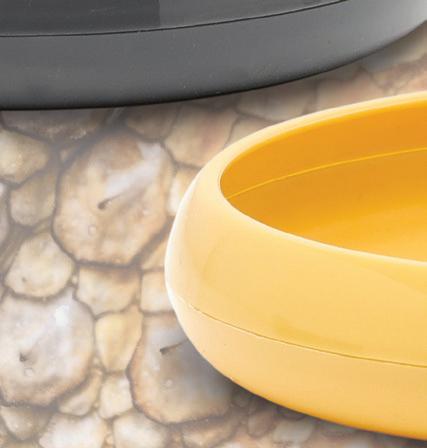
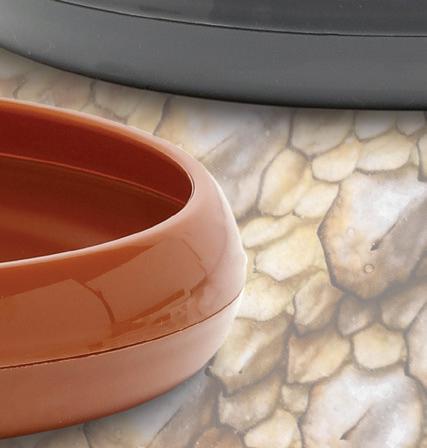

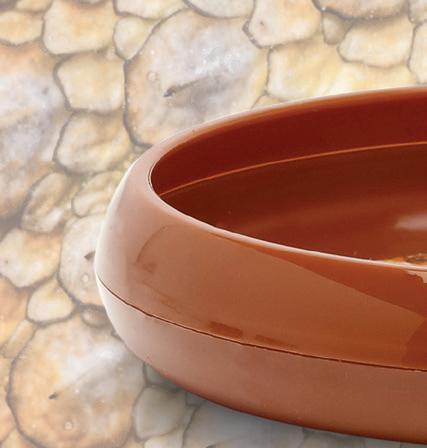







Available in 2 sizes: 75mm & 120mm (XL) 3 colours: Earth Brown, Slate Grey and Sandstone.
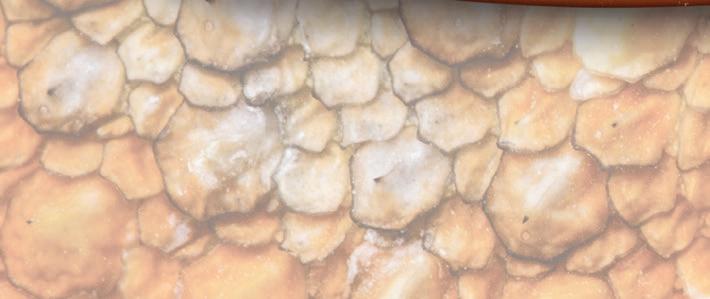



Available in 3 colours


Hermit crabs have become a popular species to go for as people delve more into mixed-terrain environments such as the paludarium. They also tend to live in groups, are fairly easy to care for and make for a refreshingly different choice of animal to keep.
There is a handful of common species on the market, but some rarer than others. The blueberry hermit is one such species, named for its lovely and vibrant blue colouration. This blue can also bleed into purples and reds. They develop these colours once mature, being beige or cream as youngsters.
The blueberry hermit crab comes from Southern Japanese islands; it is also known as the Okinawan blueberry hermit crab. This range extends down to Malaysia.
You’d be very fortunate to see any for sale in a store –most of them are sourced from online collections. Be wary of other coloured hermit crabs incorrectly listed and priced as C. purpureus, as other species can come in blue and purple pigmented varieties.
The natural habitat of this colourful hermit is quite humid and should stay at 70-80%, with a temperature maximum of 30°C. Maintaining humidity is easily done with a substrate of coir and a sand, which will also allow digging and burrowing when kept at a ‘sandcastle’ consistency.
Known to be shell-hoppers, these crabs should be supplied with a choice of housing to swap and change. Oval-shaped openings are best suited to their body type according to the anecdotes of keepers. They’re known to be quite active and inquisitive little things which adds to their charm, but they cannot be mixed with other species.
They are also a generally omnivorous hermit crab species, and fresh healthy foods should keep them happy and vibrant.
These crabs have been observed in their natural habitat alongside other hermit species in the area utilising plastic waste items such as bottlecaps for housing, which highlights both the rampant global pollution issue but also the adaptability of some species to their changing environments.






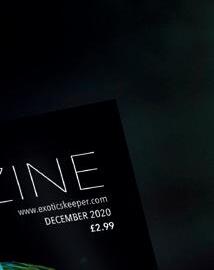















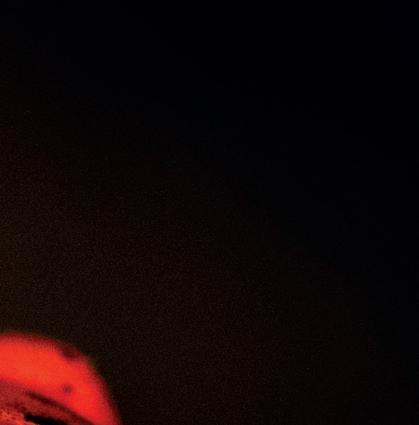
£2.99 Monthly + £1 postage


A WIDE RANGE OF ARTICLES, GUIDES, HOT TOPIC DISCUSSIONS, AND INTERVIEWS, FROM ALL AREAS OF THE EXOTIC ANIMAL WORLD.

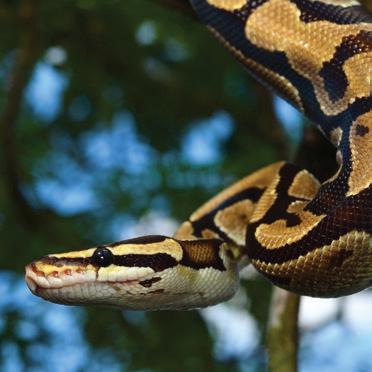






















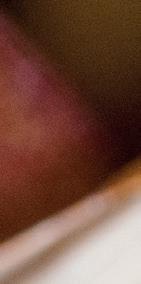








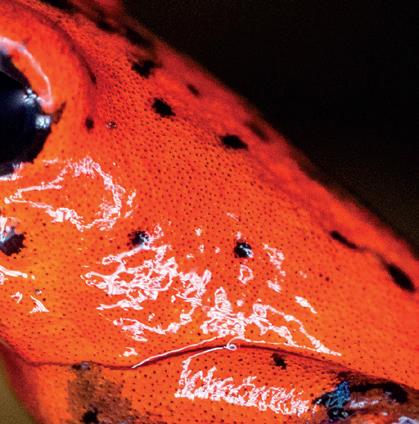
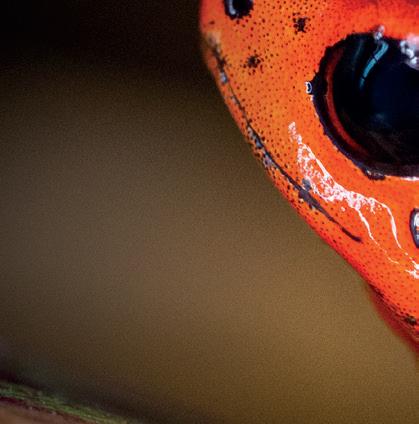










• Produces excellent natural colours and iridescence • 1.0 UVI for optimal avian use

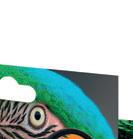
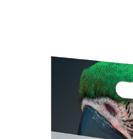








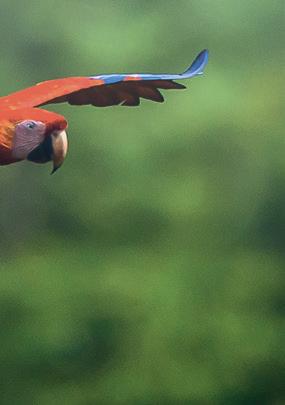






• Improves feeding and breeding behaviour



• E27 fitting
• Full spectrum lamp
Compact Spiral Bulb
• Electronic - zero flicker, even to the eyes of the bird


• Always provide shade area for animals
Compact 3U Bulb


USE IN VERTICAL POSITION FOR BEST RESULTS

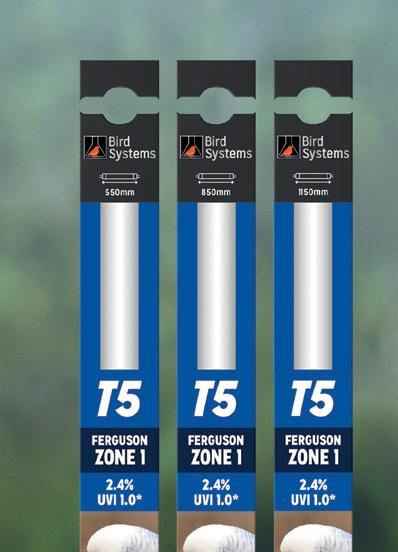
Rotating Ceramic Bracket
ECO T5 UNIT, T5 & T8 LAMPS ALSO AVAILABLE IN THIS RANGE

















USE IN HORIZONTAL POSITION FOR BEST RESULTS



CAN BE USED WITH ANY OF THESE
Rotating Ceramic Bracket

Compact Lamp Unit


Compact Twin Lamp Unit

Despite being some of the most iconic tropical birds on the planet, it is highly unlikely you will see a toucan in a UK pet shop.
 Toco toucan (Ramphastos toco)
Toco toucan (Ramphastos toco)
From budgies and cockatiels to African greys and macaws, aviculture is bustling with exciting species that have become well established within the hobby. However, the iconic toucan species that possess many of the desirable traits in a pet bird have never reached the same heights of popularity in the UK. Frugivorous, widespread and visually striking, Exotics Keeper Magazine asks, “why don’t we see more toucans in the UK?”

There are around 40 different species of toucan belonging to the Ramphastidae family. These include the smaller toucanets and aracaris. Found across Central and South America, most species will feed and nest exclusively in the forest canopy. Although most of these birds are of ‘least concern’ to the IUCN, almost every species of toucan, toucanet and aracari is facing a decline in population as a result of agriculture and infrastructure development.
The toco toucan (Ramphastos toco) is without doubt, the most iconic of all toucans. With black and white plumage and a vibrant sunset beak, the Guinness poster boy is easily recognisable against other species of tropical birds. However, the keel-billed toucan (Ramphastos sulphuratus) is also popular in UK zoos as well as the smaller, more manageable green aracari (Pteroglossus viridus) and curl-crested aracari (Pteroglossus beauharnaesii)
With such a diverse spectrum of species, each requiring very specific husbandry needs, the term ‘toucan care’ is almost too broad to entertain. Yet, there are some distinct differences between toucans and parrots that makes the former, much more demanding than the latter.
AMPLE ENCLOSURES
Toucans, especially the larger, more desirable species rarely sit still. Even the smallest toucanets can be arguably more inquisitive than many parrots. Unsatisfied with conventional parrot toys, toucans will constantly bounce around their environment searching for entertainment. While this can be very appealing for a while, the level of dedication required to fulfil the bird’s inquisitive nature can be far too exhausting for most keepers.
David Woolcock, Curator of Paradise Park continued: “A macaw could theoretically survive in a cage, it wouldn’t thrive but it would survive. A toucan, on the other hand, wouldn’t. A toucan needs a large, very well planted aviary as well as a heated, well lit, draft proof indoor enclosure too. The day length in the UK is much shorter than South America, so having a long photoperiod is crucial for toucans. The heating is also required to prevent illness. Nothing brings a bird down faster than the cold.”
Toucans and aracaris are much more popular in the US, particularly in southern states where the weather is much warmer. Keepers of aracaris will often keep
the birds in large cages and let them into a ‘flight’ for exercise. This is not a luxury that UK keepers can facilitate and therefore, even the smallest species require a dedicated and professional enclosure.
Frugivorous birds are notoriously messy. Not only because their fruit filled diet is much less vacuumfriendly than seeds and grains, but because their droppings can only be likened to a Jackson Pollock painting. For the indoor aspects of their required enclosures, cleaning can prove to be extremely messy.
They are also notoriously fussy animals. Fresh tropical fruit needs to be provided twice a day, with keepers often reporting birds refusing their fruit without any noticeable reasoning. Keepers are also unable to store fruit as easily as grains, with seasonality also affecting food supplies.
Toucans will also throw food all over the enclosure, due to the size of their beak, which can attract pests. David continued: “Toucans are susceptible to lots of diseases, from iron storage disease as a result of poor diet to pseudotuberculosis. If they come into contact with mice or rats that are carrying harmful pathogens it can be very damaging for the bird.”

With such a small number of toco toucans being successfully bred in captivity and with such a widespread distribution in the wild, toucans are often illegally trafficked between countries to meet demand. Paradise Park in Cornwall has recently received 27 birds which were seized in Belgium as a result of illegal trafficking across Europe. Two of these birds were toco toucans which David Woolcock, Curator of the park said “Although Europe has strict rules on exports, it is quite easy for a trafficker to take something over a border and export from another country. As a result, we have no idea where our toucans have come from, just that they have no leg tags. This suggests they were not captive bred and likely to fetch a large sum of money.”
“We accepted the birds knowing that the two toucans were in quite bad condition, with chronic foot problems. We’ve spent a lot of time working with our vet and its looking like they will come through this. In fact, after going through a moult, the pair look beautiful and we’re hoping that we can rear some chicks next year.”

Water dishes also provide some trouble. Being a ‘soft bill’ bird, toucans need to drink by capturing liquid in their huge beak before they can drink it, meaning water dishes need to be big enough to drink from. Anything big enough for a toucan to drink from is big enough to be bathed in and anything big enough to be bathed in is big enough to soil. This demands more regular water changes than species who will have a dedicated bath area.
Finally, the obscurity of a pet toucan can mean appropriate care and advice is always further afield than parrots. Finding a vet that truly understands the specialist needs of toucans can prove troublesome.
David concluded: “I know some breeders in the Netherlands and others in Europe that do exceptionally well with toucans. They provide a superb diet and have brilliant enclosures leading to healthy birds. It’s a shame that these professionals are the exception. Toucans are such beautiful birds that deserve more than they usually get in captivity.”
Seeing Toucans so rarely in capt`ivity, even in zoological institutions holds benefits not just for the birds, but for those interested in them. Holiday makers in Central America are often stunned by the




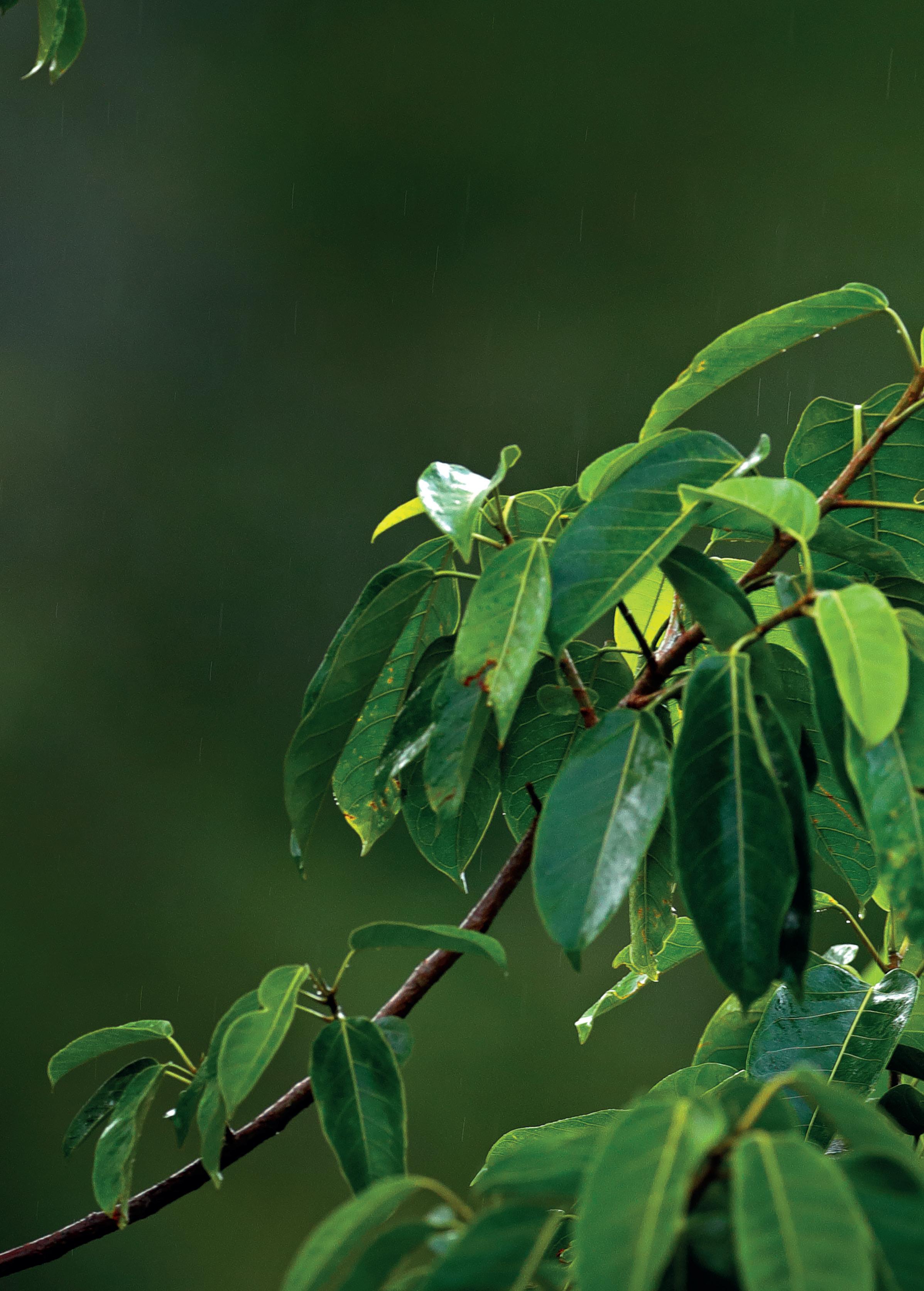
abundance of these tropical icons. In fact, Belize even appointed the Keel-billed toucan (Ramphastos sulfuratus) as their national bird. Seeing a flock of wild toucans can be a truly incredible and memorable experience for tourists and Costa Rica is an excellent destination for those interested in tropical birds where sightings of toucans are considered common. Responsible eco-tourism is a great way to get up close with animals that do not do well in captivity.
Soft bill – A non-scientific term referring to any bird that is adapted to a soft diet.
Flight – A flight is a large area designed to allow a pet bird to fly, as opposed to an aviary which typically houses multiple birds.
Paradise Park is currently fundraising to meet the financial challenges presented by lockdown. To support the work of the park, please visit paradisepark.org.uk
The Serval ( Leptailurus serval ) is an African wildcat, widespread in sub-saharan countries and worshipped by the Ancient Egyptians for centuries.
Measuring around 60cm in length from shoulder to tail, this wild cat is a formidable predator. Camouflaged by their prized spotted fur, the serval can leap 9 feet in the air to catch birds, mid-flight. Camouflaged amongst the dense savannah grass and reeds, they use their long legs to pounce on prey, both in the air and on the ground. Studies found that servals are successful in 50% of their pounces and mothers with kittens are even more successful (62%). It is also thought that servals can track mole rats by listening to their movements beneath the ground. Once the mole rat surfaces, the serval will either sling the rodent into the air or deliver a blow with its paw that stuns the animal before the serval will consider taking a bite. They are solitary animals that spend mornings and evenings hunting, then resting in abandoned aardvark burrows during the hottest hours of the day.
The serval is widespread across 34 African nations which contributes to its ‘least concern’ status on the IUCN Redlist. While this vast range is positive for conservation, the distribution of habitable land for servals is diminishing. Feeding largely on rodents that are much more abundant in wetland environments, the serval, despite appearing to be adapted to arid environments, relies heavily on wetland habitats. This has led the North African subspecies (L. serval constantinus) to be considered endangered. Servals are also considered to be rare in South Africa where urbanization has accelerated.
The increase in infrastructure across many African countries is making serval-human interactions much more common, which often spells disaster for the serval. Cats which become too domesticated can find themselves at risk as they venture into urban environments.







































Reptiles and amphibians are among the most threatened species in Europe. Tom and Harvey, both 17, have made it their mission to change this.
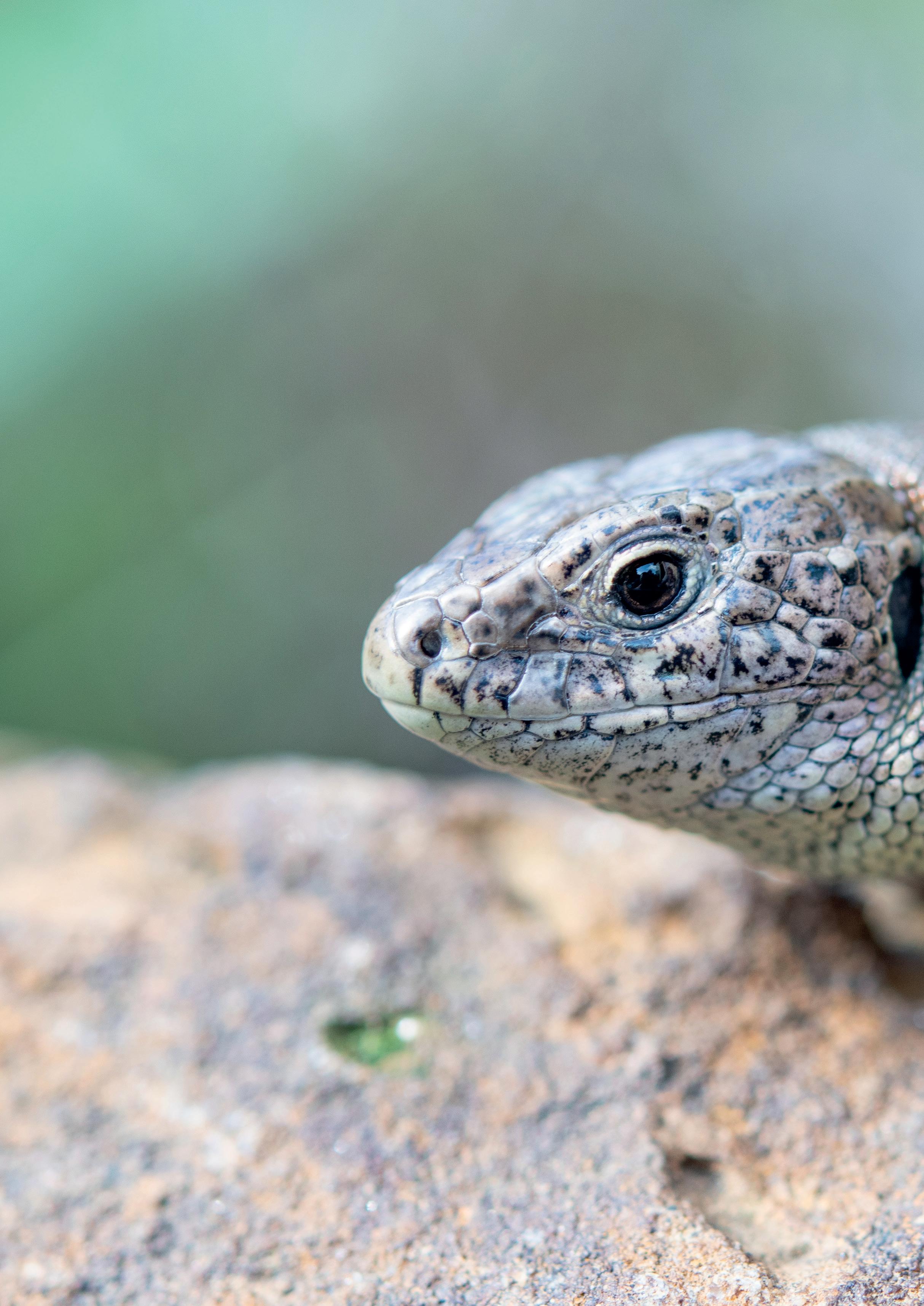
 Sand lizard (Lacerta agilis)
Sand lizard (Lacerta agilis)
Introducing: Celtic Reptile and Amphibian
Celtic Reptile and Amphibian has gained a huge amount of attention from national news recently, a rare occurrence for positive herpetological news. However, two teenagers spearheading an immense conservation effort by launching the largest breeding facility for European herptile species in the UK certainly demands the attention.
Harvey Tweats and Tom Whitehurst, 17, from Staffordshire conceptualised the idea during their GCSE’s. Destined to work in conservation from a young age, Harvey was inspired by his grandad to love the natural world, while best friend and co-founder Tom, found inspiration in Harveys love for reptiles.
Harvey said: “It all started on a frosty winters day when I was stood on a beaver dam in Devon. It was amazing to see the impact the beavers had to the biodiversity. After 6 years the dam was built, the place was full of birdsong. But one thing was missing, the frogs. In places like Bavaria, where beavers have been for over 500 years, the place is alive with frog calls. So, I thought “who is thinking about the reintroduction of reptiles and amphibians?”
Harvey, who has been keeping reptiles and amphibians for 10 years turned his attention to European species 5 years ago. Tom, Co-Founder of Celtic Reptile and Amphibian added: “I honestly had no clue on the impact that industrialisation has had on our country’s reptiles. I’ve been involved in the hobby for around 3 or 4 years. Though, I’ve been mates with Harvey for a long time and seen the animals he keeps which has been a great influence to me. I just thought it was crazy to be able to keep stunning reptiles outdoors, here in the Midlands.”
Herpetofauna represents one of the most endangered groups of vertebrates in Europe. According to the IUCN, nearly a quarter of amphibian species and 20% of reptiles are considered threatened in Europe.
Multiple threats face European reptiles, from historic slaughtering of wild animals to climate change, habitat destruction and invasive species. The American red-eared slider (Chrysemys scripta elegans), for example, is decimating European pond turtle (Emys orbicularis) populations across Europe. 52 million of these animals were exported from the US between 1989 and 1997 for the pet trade and now inhabit many of the ecosystems previously supporting the European pond turtles.
Climate change has also recently been proven to have caused and continue to contribute to the decline in reptiles and amphibians in Europe. It is suspected that ‘most’ species of European herptile will lose suitable climate space by 2050. This is more prevalent in amphibians as water scarcity poses an increasing threat. In warmer climates, the disappearing of permanent wetlands is considered to have huge implications on European amphibians.
Celtic Reptiles and Amphibians will assist in continentwide conservation projects. Species that are likely
to benefit from the efforts include the moor frog (Rana arvalis) and the agile frog (Rana dalmatina). Although considered ‘Least Concern’ by the Encyclopdia of Life, the populations are declining rapidly. Harvey claims “these species are being absolutely hammered by infrastructure development.”
Archaeological finds in East Anglia prove that both the agile frog and moor frog were once widespread across the British Isles. Now, moor frogs are extinct in the UK and agile frogs can only be found in Jersey, with only one confirmed breeding site remaining. Although this population decline likely happened during the first Century AD, it represents a broader picture of the herpetofauna of the United Kingdom.
European species of reptiles and amphibians have been kept since the industry began, with localised species paving the way for husbandry understanding. However, replicating the environments on our doorstep can still prove challenging. Due to CITES restrictions, which ban the collection of European species, all the animals at Celtic Reptile and Amphibian are captive bred.
Tom and Harvey claim that some of these are from collections that have been ongoing for 60+ years and therefore the animals are better suited to their environment. However, it also means that animals are likely to descend from locales beyond British shores.
Despite claiming that, overall, European species are easier to keep than true exotics, Harvey said: “The sand lizards have actually been a nightmare. Although breeding projects in the UK have actually been really successful, ours are from mainland Europe. The locale we work with really don’t like our climate. They don’t get on with oceanic temperatures, so we’ve had to create a more stable environment for them. What we’re doing to combat this is mixing indoors and outdoors enclosures. From about September, October, we’ll bring them inside into a fully bioactive indoor enclosure with full lighting spectrum and basking spot etc. Then at the beginning of the year, we’ll move them back outside.”
 Introducing: Celtic Reptile and Amphibian
Harvey (left) and Tom
Introducing: Celtic Reptile and Amphibian
Harvey (left) and Tom
While the prospect of keeping reptiles and amphibians in outdoor enclosures and vivaria may be off-putting to some enthusiasts, there is a clear trend toward natural environments that is developing in the hobby. Whether it be the move toward bioactive, or the implementation of natural substrates, replicating the wild is paving the way for major breakthroughs.
Harvey said: “we tried to simulate the sand lizards outdoors enclosures by ensuring great air flow. This blows away pathogens and prevents them from getting ill, it’s common sense really. We used computer fans to create a jet stream through their enclosures. We also keep the rooms quite cold,


their basking spot to help them acclimatise.” Tom added: “A lot of these things are universal with all species, but also the kind of things people forget.”
Tom and Harvey feed all their animals a diet which they describe to be similar to a “balanced diet chart”. They use conventional feeder insects such as crickets, locust and calciworms with the expectation that the animals will also feed on wild insects. The pair claim this has a wealth of benefits for the animals. Harvey continued “feeding our animals in their secure outdoor enclosures means the insects will feed on the natural vegetation and absorb UVB and convert it to D3. This makes for much brighter colouration and healthier animals.”
(Emys has been classified as ‘Near Threatened’ on the IUCN redlist for decades, with numbers continuing to decrease. Tom and Harvey have devoted a lot of their efforts to establishing a successful captive project for this species.
“Although stated as near threatened, this species is easily endangered by now. They have been hugely affected by road modifications, they’re slow animals and extremely vulnerable to new road infrastructure. Plus, their locales are so diverse, animals from one region are very different to

The European pond turtle is medium sized turtle, reaching around 20-30cm in length. The species is thought to have inhabited the UK around 8000 years ago, but due to climatic cooling, populations on the British Isles became extinct. Now, the species inhabits ponds and slow moving rivers across Europe and while their distribution is vast, their fragmented populations mean the species is rapidly declining across the entirety of Europe.
Celtic Reptiles and Amphibians has strict biosecurity measures in place to protect against chytrid, ranavirus and other infectious pathogens. The duo have also built up a strong network of supportive professionals and institutions to advise on biosecurity measures and environmental responsibility.

Harvey said: “We take biosecurity very seriously. We’re working closely with experts in the industry to create watertight biosecurity methods. We also use a block system, involving sanitisation and foot dips between enclosures. Our biggest threat comes from other private collections so every animal is subject to a 6 week quarantine period.”
As well as building ecologically certified newt and
reptile fencing around the facility, the duo have deliberately avoided including midwife toads (Alytes .spp), alpine newts (Ichthyosaura alpestris) and all salamander species to their collection, which are particularly susceptible to disease.
With Brexit and COVID-19 creating significant issues across the reptile-keeping industry, Celtic Reptile and Amphibian have also encountered challenges as a result. Tom said “Most of our species are from mainland Europe. Naturally, Brexit is very concerning. We have been working with DEFRA to overcome some of the challenges with importing and exporting animals. But really, COVID is causing more of a problem for us. We can’t go anywhere to actually source the animals from breeders. Then again, we were always going to expect problems and it’s just a matter of finding solutions to them. “
Tom and Harvey expect to have Celtic Reptiles and Amphibians completed by 2022. They hope that the main infrastructure will be in place by March, with a swathe of further greenhouses being installed between April and June. Harvey said: “It’s difficult to say when a project like this is ‘complete’ but we expect to have finished our initial plans by next year.”

Exotics on our doorstep Europe is home to some of the most vibrant species on the planet, but all too often the species that live on our doorsteps are often disregarded as drab or irrelevant. Although it’s undeniably exciting to see reptiles in the UK, people often consider the lizards they see on holiday as infinitely less impressive than the pythons, day geckos and dart frogs they might see in the zoo. However, there are a number of European species that are stunningly exotic and live much closer to home than expected.
Fire Salamanders (Salamandra salamandra) are found throughout most of Europe. Known for their stunning colouration, the locales of this species vary so much that several subspecies have been described. This amphibian spends the majority of its time hiding in damp bark and wood. When local people would burn firewood and logs, this species would often emerge from its hiding spot, coining its common name.
Favourite species to work with, Tom?


“For me it would have to be the European tree frogs. As we would work through the greenhouses last summer, the calling from those frogs was absolutely deafening. They’re the loudest frogs in Europe and don’t look like an average frog, they’re almost alien. But, working with our eyed lizards is also a favourite. They really have their own personalities and just have stunning colouration.”
The Mediterranean Chameleon (Chamaeleo chameleon) is present across southern Portugal and Spain, as well as North Africa. However, this species was introduced successfully to the Maltese islands in the mid-19th Century by Protestant missionaries. Although population numbers have dropped significantly, the introduction of this species to island strongholds is likely to have a positive impact on the species’ survival in Europe.
There are even members of the Boidae family in Europe. The javelin sand boa (Eryx jaculus), although thought to be extinct across much of its European range, was recently rediscovered in Romania and Siciliy. The researchers at Acta Herpetelogica who were responsible for rediscovering the snake published a paper suggesting this species found its way to Europe in 800BC, where it was used as a weapon by the ancient Greeks.
“I’m definitely in a turtle phase right now, I’m obsessed. I think the viability of reintroduction for this species is really exciting. They’re also stunning to look at, they’re dusted with gold and move with such elegance. I also think the male sand lizards are great, their colouration is starting to come through now and they’re stunning. If we can prove this species can be saved by captivity, people might consider doing this professionally.”
Harvey and Tom, at the age of 17 have already managed to turn one dream into a reality. However, the duo are continuing to look forward to the endless conservation possibilities ahead of them. The first step for Celtic Reptile and Amphibian beyond their own captive breeding project is to open the facility to specialist training and
photography workshops. The pair described the final goal for the project to launch a “playground of shared interests” where talks and workshops can be held to discuss conservation of European species. Harvey also described a passion for working with the conservation and reintroduction of large mammals at some point in the future.
By encouraging young people to inspire other young people, conservation becomes a persistent goal through generations. In this case, exotics keeping soon lead to captive breeding and for Tom and Harvey, their careers in conservation have only just begun, spelling fresh hope for Europe’s reptiles and amphibians.
UK NATIVE REPTILES
GRASS SNAKE (NATRIX NATRIX)
ADDER (VIPERA BERUS)
SMOOTH SNAKE (CORONELLA AUSTRIACA)
SAND LIZARD (LACERTA AGILIS)
VIVIPAROUS LIZARD (ZOOTOCA VIVIPARA)
SLOW WORM (ANGUIS FRAGILIS)
UK NATIVE AMPHIBIANS
COMMON TOAD (BUFO BUFO)
NATTERJACK TOAD (EPIDALEA CALAMITA)
COMMON FROG (RANA TEMPORARIA)

POOL FROG (PELOPHYLAX LESSONAE)
GREAT CRESTED NEWT (TRITURUS CRISTATUS)
SMOOTH NEWT (LISSOTRITAN VULGARIS)
PALMATE NEWT (LISSOTRITAN HELVETICUS)
Introducing: Celtic Reptile and AmphibianThe bearded dragon is one of the most popular pet reptiles and has been for some time, but major breakthroughs in field research are readdressing how we should keep these much-loved lizards.

 Bearded dragon (Pogona vitticeps)
Bearded dragon (Pogona vitticeps)
There are eight different species of bearded dragon, all belonging to the Pogona genus. Two of these species have established themselves incredibly well in the pet trade for different reasons. P. vitticeps is impressively large, whereas P. henrylawsoni, or the ‘rankins dragon’ is manageably small. Both species are considered ‘easy to care for’ and do exceptionally well in captivity.
Despite being so popular in the US and European pet trade, Australian field researcher and veterinarian, Dr Jonathon Howard (Beardie Vet) suggests we still have a long way to go before topclass husbandry becomes the ‘norm’.
Due to the geological significance of Australia, over 90% of the country’s reptile and amphibian species are found nowhere else in the world. This ecological fragility led Australian Government to enforce a ban on importing and exporting all flora and fauna. Experienced keepers will understand the implications of the ban to the international pet trade and whether celebrated or condemned, the restrictions have successfully limited the export of many species.
With the Australian ban on exports coming to fruition in the 1960s and major scale breeding of P. vitticeps only gaining traction in the 90’s, understanding how the ‘beardie’ became the nation’s best loved reptile is complex and unfortunately, rooted in smuggling.
According to Ray Hoser, Australian herpetologist and author of Smuggled and Smuggled 2, most illegal exports happened between 1974 and 1990. Wild animals would arrive in Europe, usually the Netherlands or Germany before being dispersed legally across the planet. The initial wave of demand
is thought to have been influenced by commercial campaigns, with a particular TV advert showing bearded dragons and frilled lizards in Japan, increasing demand overnight. Luckily, it wasn’t long after the first exports of bearded dragons began breeding successfully and prolifically, putting an end to the unscrupulous side of the market.
The ban on exporting wildlife also limits the keeping of Australian species within Australia, which requires a permit in most states. This means that their popularity in the Aussie pet trade pales in comparison to US and European industries and has developed an entirely different, research-lead market.
Due to the bearded dragon’s success in captivity and hardy demeanour, captive research was often based around keeping the dragons healthy and promoting successful breeding. Both of these were considered indicators of good husbandry, but recent research suggests that much of the problems encountered in captivity were a result of keepers straying too far from wild conditions.
Dr Jonathon Howard is an exotic pet veterinarian from New South Wales, Australia. After a lengthy career as a vet and being appointed president of the Australian Herpetological Society, Jonathon turned his attention to researching central bearded dragons in the wild. From here, he created the ‘Beardie Vet’ facebook page, bringing cutting edge field research to international pet owners in a bid to improve husbandry across the globe.
Dr Howard explained “It really came about as a kid capturing wild animals, blue tongues, snakes etc. Then when I figured out what I wanted to do in life, I became a vet. It wasn’t until then that I began doing herping field trips. I did one placement with the vet school,
out west in New South Wales in a place called Bourke. In Australia we even say ‘the back of Bourke’ when something is that remote, it’s really far out West and scorching hot. Yet, in one spring we saw over 40 bearded dragons out in the hot dry sand. After keeping bearded dragons in the 90s myself, it was crazy to think how people were still keeping these as pets.”
The central bearded dragon inhabits arid and semi-arid habitats throughout central and South Australia. These environments always contain some level of vegetation for the animals to perch and bask on as the central bearded dragon is semi-arboreal. Conventional vivariums should ensure some height to provide

adequate climbing space required by these lizards. The Australian Museum recorded an individual P. vitticeps perched in a tree, 3m above the ground, for a period of three weeks.
Natural substrate is also important to providing the environmental enrichment that bearded dragons need. Dr Howard explains “When you go to these places where the bearded dragons live, it’s 96% sand. Wild dragons will dig from time to time and you still see people using carpets and newspaper as substrates. It is down to our husbandry that’s causing issues [with impaction].”
Impaction is a term used for when captive animals will consume their substrate, often leading to serious health complications.
Bearded Dragons: A New Angle Central bearded dragon (Pogona vitticeps)Developing research is starting to draw a correlation between vitamin D3 absorption and impaction. There are multiple requirements for an animal to convert minerals and calcium into vitamin D3 successfully, with the most prominent being correct exposure to UVB.
Impaction is not the only issue though. General behaviour and health are affected significantly in captivity where dragons are unable to dig and forage, as they would in the wild. They may do this for hunting, egg laying or to regulate their temperature and absorb moisture. It’s important we consider how to replicate these behaviours as best as possible in captivity for mental health and well-being.
In the wild, bearded dragons can spend long periods of time basking in direct sunlight. Naturally, they would absorb high levels of UVB whilst doing this, which many keepers in the 90s could not provide. Dr Jonathan Howard continued: “One thing people are concerned about is impaction. In my entire career I have only ever encountered 5 beardies that have suffered from impaction and all of these also had metabolic bone disease. In the US and Europe, sand impaction can be a problem but we just don’t see it as often in Australia. The one major
difference with how we keep beardies in Australia is we are always told to take our bearded dragons outside. Even in the middle of winter we can have a much higher UVI than much of Europe. By providing that UV, we help our bearded dragons convert calcium into D3.”
“A study on young bearded dragons saw that the individuals that were supplied with good UV actually preferred greens. So they weren’t going after the protein as much as the ones that were deficient in UV. This modified diet to meet insufficiencies, in the vet world is called ‘pika’. Although it hasn’t been officially proven, we think the bearded dragons are actually eating sand to try and get that extra calcium to help them create D3.”
Despite being kept in captivity for decades, even the most basic of requirements such as heating and ambient temperatures have room for improvement. Dr Howard suggests that much of the literature around keeping bearded dragons promotes basking temperatures far lower than the wild provides. He explained: “Temperature wise, bearded dragons in captivity have monophasic basking habits. But that’s because people aren’t keeping them hot enough. In the wild, bearded dragons have biphasic basking patterns, usually only basking in the morning and in the evening to get their temperature up.”



Bearded Dragons: A New Angle
However, a study by Mcmillan, conducted in the same area of New South Wales actually found that adult males were eating 90% vegetable matter, which lead him to label them herbivorous.”
“If people are feeding them too much protein it can lead to gout and other health problems. Also, people overfeeding youngsters can cause liver failure. They should remember reptiles have a metabolism 1/20th of a birds. The liver is also responsible for converting D3, so if that’s damaged, it can also contribute to impaction. Bearded dragons, especially adults, don’t need to be fed every day. I would say vegetable matter 3 times a week and insects maybe once or twice, that is the ideal diet.”
Luckily, there are many bearded dragon plant-based diets on the market now. Even more natural are the edible plants that have appeared in the industry recently. For example, the ProRep edible plants range offers pet owners the opportunity to feed natural vegetation as part of a balanced diet.

Bearded dragons will drink out of a shallow water dish with no problems. However, these lizards have been observed to drink from directing rainwater to their mouth. An individual in an outdoor enclosure studied by the Australian Museum positioned itself to stand tall on its hind legs, with its head and tail sloping down. Water droplets were then directed towards the lizard’s mouth where it licked the moisture to drink. This way of drinking is not uncommon for desert species but offers fresh insight into how we replicate natural environments for bearded dragons.
Much of the misinformation around the diet of bearded dragons can be justified by the fact their bodies are terrible at breaking down much of the plant matter that they eat. Because of this they rely on complex bacteria and parasites to digest their food for them. Dr Howard explained: “People are always trying to wipe out parasites completely. But actually, pinworms are just normal microfauna. They have a symbiotic relationship with the bearded dragon and actually help them break down vegetable matter. They also help with the immune system and trying to wipe out all parasites is just like a human taking too many antibiotics all the time.”
Products designed to maintain a natural healthy gut are starting to appear on the market in the form of monthly supplements. Brands such as Verm-X use natural herbs to promote healthy digestion and while this is yet to be embraced as the industry
standard (such as calcium powder and vitamins) it paints an interesting picture of the future of pet care as more people realise the importance of a healthy gut.
One of the major appeals of bearded dragons in captivity, is their expressive personalities towards any prospective keepers entering the pet shop. Often seen waving and head bobbing at the front of the vivarium, bearded dragons can appear reasonably social for a reptile.
Interestingly, a friendly wave carries a similar meaning in lizard language. Arm waving signifies submission to other individuals, which could be likened to a friendly “hello”. Females will also wave to males to signify responsiveness to a potential mate which is often combined with a slow head bob.
Head bobbing and posturing generally signifies more aggressive intentions. Despite spending much of their time alone in the wild, the best basking spots can bring many lizards to the same location. The higher branches are occupied by the most dominant males. Although head bobbing is used by different animals for different reasons, males tend to head bob to assert dominance. A low bow is used by females to express submission to a dominant male. Before mating, the male bearded dragon can often be seen to frantically bob with his entire body, potentially signalling excitement.
In captivity, understanding the lizard’s language can help us gauge the best way to keep our animals happy. Dr Howard continued: “With body language, the males will often gesture during breeding season whether anyone is there or not. When it comes to breeding, the female will actually approach the dominant male and promote a dominance ride. Males do this too, but instead of mating the dominant male will bite and continue to push and bite. In the wild this can escalate, but the loser can escape. This can’t happen in an enclosed environment. I would avoid cohabiting bearded dragons unless it’s for breeding purposes”
 Bearded Dragons: A New Angle
Bearded Dragons: A New Angle
Dr Jonathon Howard: “We are in the golden age of reptile keeping now”
Colouration varies drastically between bearded dragons. Species, locales, temperature and even mood can contribute to one bearded dragon looking entirely different to the next. P.vitticeps can change its colour to better help the individual thermoregulate their temperature.
will change to deep orange sand and rocky outcrops. This diversity in locales contributes to the vibrant herpetoculture morph breeding scene which recognises countless colour and pattern variations.
Venom
In 2005, researchers at The University of Melbourne, led by Bryan Fry, discovered that the Eastern bearded dragon (P. barbata) still possess ancient venom glands. Bryan writes “Pogona barbata retains characteristics of the ancestral venom system, namely serial, lobular non-compound venomsecreting glands on both the upper and lower jaw”. Moreover, their research suggested that a huge spectrum of lizards, including monitors (Varanidae) and iguanas (Iguanidae) produce some form of active venom. Entirely harmless to humans, the remnants of ancestral venom producing organs is thought to have assisted in hunting prey.

Bearded dragons, like many species of reptile and amphibian have a ‘third eye’. Known as the pineal or parietal eye, this photosensitive organ is located on the top of the dragons head and triggers hormone production and thermoregulation. Although the organ has a rudimentary lens and retina (of sorts), it cannot process vision. However, this presence of a parietal eye suggests that keepers should never use white light in the enclosure at night. It also explains why some bearded dragons will quickly dash into cover if they are being picked up from above.
P. vitticeps can also partition colour change, meaning they adjust their colour on separate parts of the body. A 2016 study proved that the central bearded dragon can adjust the colour of their back to maintain their optimum body temperature, whilst simultaneously adjusting the colour of their ‘beard’ to exhibit social cues.

In outback Australia, the environment can change drastically across a very short distance. Despite the imagery of red sand and dead trees, the arid and semi-arid environments that bearded dragons inhabit are rich and diverse. Some locations will have dark brown dirt with dense vegetation yet within a few miles this
As further field research develops and platforms such as Beardie Vet make this more accessible than ever, we should expect to see husbandry standards increase across the world. Breakthroughs in product development are also bringing important UV lighting and naturalistic substrates to the industry making this professional husbandry more achievable than ever. Dr Jonathon Howard concluded: “We are in the golden age of reptile keeping now. In the 90s we didn’t know these things. Although there’s always more to learn, we know the basics and we know what’s needed for good husbandry.”
Solarmeter ® point-and-click handheld meters ensure the health and safety of your reptile. The Model 6.2R is used to monitor lamp intensity and lamp life. The Model 6.5R measures the UV Index related to the Vitamin D action spectrum and Ferguson Zones to identify reptile-safe basking areas.




Ideally, reptile keepers will want both meters. Because the Model 6.5R Reptile UV Index Meter’s erythemally weighted action spectrum is extremely close to the action spectrum for Vitamin D3 synthesis, it is the ideal tool to determine proper UV dose for your reptile, per the appropriate Ferguson Zone for the species. In fact, the 6.5R’s readings can function as a proxy for the Vitamin D3-producing ability of the habitat’s light source. Meanwhile, the Model 6.2R Reptile UVB Lamp Meter is ideally suited to determine if UVB lamps are performing to manufacturer’s specifications, gauge intensity, and measure aging over time. In short, use the Model 6.5R to determine proper UV dose for the animal, and use the Model 6.2R to determine UVB lamp output.
With more and more exotic species becoming popular across herpetoculture, aviculture and aquarist industries, the necessity for speciesspecific products is becoming larger.
When it comes to freshwater aquarium fish, few groups are as vibrant and diverse as the Lake Malawi Cichlids. With almost 300 known species and many available within the aquarist industry, a group of Malawi Cichlids can make for an impressive tank.
Cichlids represent a vast family of freshwater fish. Many species come from Central and South America while others inhabit waterways in the Middle East, India and Sri Lanka. Yet, the most well-known of the Cichlid species thrive in Lake Malawi, Lake Victoria and Lake Tanganyika in East Africa. Unlike their American cousins, most of these species are herbivores feeding largely on algae. Just like many other sectors in the exotics industry, the necessity for species-specific diets to meet unique nutritional requirements shines through in this sector of fish keeping.
Dr Dave Pool has over 45 years of experience in the aquarist industry. He completed a degree in Zoology followed by a PhD in Fish Health and had a lengthy career with industry giants Tetra before founding FishScience in 2013. Dr Pool told Exotics Keeper Magazine: “Because of the populous of Cichlids in Lake Malawi, most plants are eaten as soon as they grow, forcing Malawi Cichlids to feed mostly on algae. However, as these fish eat the algae, they also consume small insects who are also feeding on the algae. FishScience has aimed to replicate this natural diet by creating pellets comprised of Spirulina, Chlorella and Kelp, as well as a range of insect meals. Understanding the fishes feeding habits is also crucial. Cichlids are absolutely voracious feeders, so we’ve created pellets that sink at different rates to break up the feeding locations”
“In an ideal world there would be much more distinct products available on the market. Unfortunately, many keepers will have some guppies, a few cichlids

diet. This means specific foods that meet specific requirements are quite limited.”
Across herpetoculture, aviculture and aquarist industries the accelerated shift towards naturalistic enclosures and natural diets is creating positive ripples for animal welfare. FishScience was created from a desire to fulfil a more natural niche in the market.
Dr Pool concluded: “Most fish are not fish eaters, so the fact that the majority of fish foods were made from fish meal made no sense. That’s where FishScience began, we created a food made from insect meal and people just ‘got it’. We began with black soldier fly larvae and eventually expanded into other insects to create an array of nutritional profiles. We managed to tailor all food to individual species, we experimented with shrimp and fish meal in small quantities too, replicating the flesh that some fish will pick at in the wild. Even our herbivorous foods, the Malawi cichlid pellets contain a very small amount of insect meal to replicate the natural diet of these fish.”
As the industry continues to diversify its products with true experts behind the helm, exotics keeping is becoming more exciting than ever. Whilst specialist products provide a refreshing service for industry experts, higher husbandry standards also become more accessible for the novice, meaning everybody wins.
For an in-depth look at FishScience visit the Exotics Keeper Website. For further information visit www.fishscience.co.uk









As voted by readers of Practical Fishkeeping magazine
























Uses cultured insect meal to recreate the natural insect based diet that most fish eat in the wild.
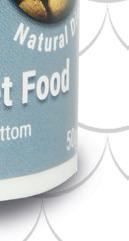









Easily digested and processed by the fish resulting in less waste.










Environmentally friendly and sustainable.


